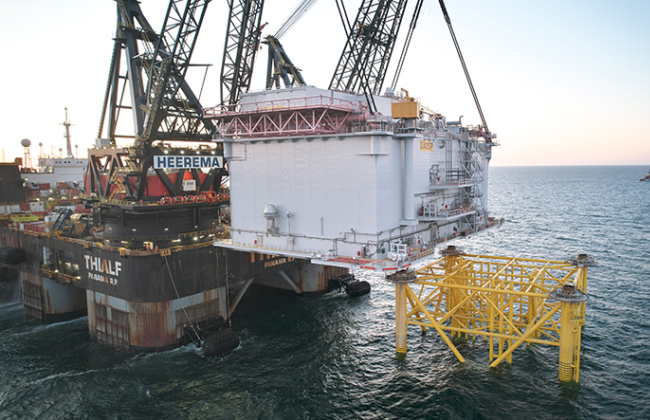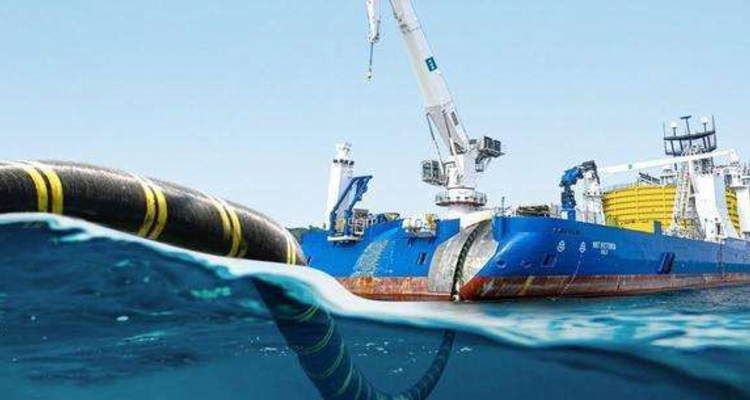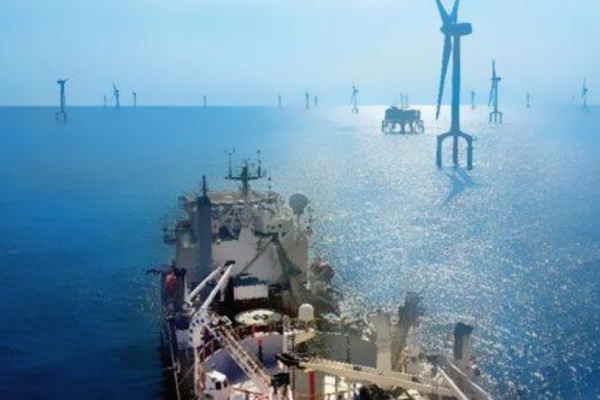Marine and offshore environments pose some of the harshest conditions for electrical systems. From deep-sea oil exploration to offshore wind farms, the need for reliable and durable electrical cables is paramount. Marine and offshore cables are specifically designed to withstand the unique challenges of these environments, such as extreme temperatures, high pressures, salinity, mechanical stress, and the risk of fire. This article delves into the intricacies of marine and offshore cables, exploring their applications, categorization, and industry significance.

Basic Introduction to Marine and Offshore Cables
Marine and offshore cables are specialized types of electrical cables engineered to meet the rigorous demands of the marine environment. These cables are essential for the operation of various offshore facilities, including oil rigs, ships, and renewable energy installations. The importance of these cables cannot be overstated, as they are critical to the safety, efficiency, and reliability of marine operations.
Key Features of Marine and Offshore Cables
- Durability and Resistance: Marine and offshore cables must be highly durable and resistant to environmental factors such as UV radiation, salt water, oil, and chemicals. They are often constructed with robust materials like cross-linked polyethylene (XLPE), ethylene propylene rubber (EPR), or chloroprene rubber, which offer excellent resistance to these elements.
- Fire Resistance: Fire safety is a critical concern in marine environments. These cables are designed to be fire-resistant or flame-retardant, preventing the spread of fire and ensuring continued operation in emergencies.
- Mechanical Strength: The mechanical strength of marine and offshore cables is crucial due to the rough handling and installation conditions they may face. They are often armored with steel wire or braided materials to provide additional protection against physical damage.
- Flexibility: Despite their robustness, these cables must be flexible enough to accommodate the dynamic movements of ships and offshore platforms. Flexibility also facilitates easier installation and maintenance in tight or complex spaces.
- Water and Pressure Resistance: Given their deployment in underwater environments, marine cables are designed to resist water ingress and withstand the high pressures found in deep-sea conditions.
Materials Used in Marine and Offshore Cables
The materials used in marine and offshore cables are selected based on the specific requirements of the application and the environment. Common materials include:
- Conductors: Typically made of copper or aluminum due to their excellent electrical conductivity.
- Insulation: Cross-linked polyethylene (XLPE) and ethylene propylene rubber (EPR) are commonly used for insulation due to their resistance to water, chemicals, and extreme temperatures.
- Sheathing: The outer sheath is usually made of materials like chloroprene rubber or thermoplastic compounds that provide resistance to abrasion, oil, and chemicals.
- Armoring: Steel wire or tape is often used for armoring to protect the cable from mechanical damage and enhance its strength.
Applications of Marine and Offshore Cables
Marine and offshore cables are integral to various sectors, including oil and gas, renewable energy, shipping, and telecommunications. Below are some of the key applications:

1. Oil and Gas Industry
The oil and gas industry is one of the primary users of marine and offshore cables. These cables are used extensively in offshore drilling platforms, floating production storage and offloading (FPSO) units, and underwater pipelines. They facilitate power transmission, control systems, communication, and instrumentation in these complex and hazardous environments.
- Power Cables: Power cables are used to transmit electrical power from onshore facilities to offshore platforms and within the platforms themselves. They are crucial for powering drilling equipment, pumps, and lighting systems.
- Control and Instrumentation Cables: These cables are used to transmit signals for monitoring and controlling various processes on offshore platforms. They ensure the safe and efficient operation of equipment by providing real-time data on pressure, temperature, flow rates, and other critical parameters.
- Umbilical Cables: Umbilical cables are a specialized type of cable used in subsea oil and gas production. They combine electrical power, control signals, and hydraulic lines in a single cable, providing a lifeline between the surface platform and the subsea equipment.
2. Renewable Energy Sector
The renewable energy sector, particularly offshore wind farms, relies heavily on marine and offshore cables. As the world shifts towards cleaner energy sources, the demand for these cables is growing rapidly.
- Submarine Power Cables: These cables are used to transmit electricity generated by offshore wind turbines to onshore grids. Submarine power cables are designed to withstand the harsh underwater environment, including strong currents, marine life, and the corrosive effects of saltwater.
- Inter-array Cables: Inter-array cables connect individual wind turbines within a wind farm, forming a network that transmits the generated power to a central offshore substation.
- Export Cables: Export cables transmit the electricity from the offshore substation to the onshore grid. These cables are typically laid on the seabed and must be capable of withstanding significant mechanical stress and pressure.
3. Marine and Shipping Industry
The marine and shipping industry uses a wide range of marine cables for power, control, and communication purposes. These cables are essential for the operation of ships, submarines, and other marine vessels.
- Power Cables: Power cables on ships are used to distribute electricity from the main generators to various parts of the vessel, including propulsion systems, lighting, and navigation equipment.
- Communication Cables: Communication cables are vital for onboard communications, including radio, satellite, and data transmission. These cables must be shielded to prevent interference from the ship’s electrical systems.
- Control Cables: Control cables are used for the operation of various shipboard systems, including engine controls, steering, and safety systems.
4. Telecommunications
Telecommunications is another critical application of marine and offshore cables. Submarine communication cables form the backbone of global telecommunications networks, transmitting data across continents and connecting countries.
- Submarine Fiber Optic Cables: These cables transmit long-distance data across oceans. They consist of multiple optical fibers encased in protective layers to prevent damage from water, pressure, and marine life.
- Repeater Cables: Repeater cables are used in conjunction with submarine fiber optic cables to amplify the signal over long distances. These cables are equipped with repeaters at intervals to boost the signal strength.
Categorization of Marine and Offshore Cables
Marine and offshore cables are categorized based on their application, construction, and environmental resistance. Below are some of the common categories:
1. Power Cables
Power cables are designed for the transmission of electrical power in marine and offshore environments. They are further categorized based on voltage ratings:
- Low Voltage (LV) Cables: LV cables are used for power distribution in systems with voltage ratings up to 1 kV. They are commonly used in shipboard and offshore platform applications for powering lighting, auxiliary systems, and other low-power equipment.
- Medium Voltage (MV) Cables: MV cables are used for systems with voltage ratings between 1 kV and 35 kV. These cables are typically used for transmitting power from onshore grids to offshore platforms and within wind farms.
- High Voltage (HV) Cables: HV cables are used for high-power transmission in systems with voltage ratings above 35 kV. They are essential for exporting electricity from offshore wind farms to the onshore grid and for interconnecting large offshore installations.

2. Control and Instrumentation Cables
Control and instrumentation cables are used for transmitting signals and data in marine and offshore environments. These cables are categorized based on their specific functions:
- Control Cables: These cables are used for operating and controlling equipment on ships and offshore platforms. They are designed to transmit low-power signals with high accuracy and reliability.
- Instrumentation Cables: Instrumentation cables are used for transmitting data from sensors and instruments to control systems. These cables are typically shielded to prevent electromagnetic interference (EMI) and ensure the integrity of the transmitted signals.
- Data Cables: Data cables are used to transmit data in marine and offshore environments. Depending on the specific application, they include twisted pair cables, coaxial cables, and fiber optic cables.
3. Specialty Cables
Specialty cables are designed for specific applications and environments in the marine and offshore industry. These cables include:
- Umbilical Cables: As mentioned earlier, umbilical cables are used in subsea oil and gas production. They combine power, control, and hydraulic lines in a single cable, providing a critical link between the surface and subsea equipment.
- Submarine Cables: Submarine cables are used for power transmission and communication across bodies of water. They are designed to withstand the harsh underwater environment and are often armored for additional protection.
- Dynamic Cables: Dynamic cables are used in floating offshore installations, such as floating wind turbines and FPSO units. These cables are designed to accommodate the constant movement and stresses of the marine environment.
4. Fire-resistant and Flame-Retardant Cables
Fire-resistant and flame-retardant cables are designed to maintain their functionality in the event of a fire. These cables are crucial for ensuring the safety of personnel and equipment in marine and offshore environments.
- Fire-Resistant Cables: Fire-resistant cables are designed to continue functioning for a specified period during a fire. They are typically used for emergency systems, such as fire alarms, lighting, and communication systems.
- Flame-Retardant Cables: Flame-retardant cables are designed to prevent the spread of fire by self-extinguishing when exposed to flames. These cables are used in general power and control applications to reduce the risk of fire propagation.
Standards and Regulations Governing Marine and Offshore Cables
Marine and offshore cables are subject to stringent standards and regulations to ensure their safety, reliability, and performance. These standards are set by various international organizations and industry bodies, including:
- International Electrotechnical Commission (IEC): IEC standards, such as IEC 60092 for electrical installations on ships, provide guidelines for the design, testing, and installation of marine and offshore cables.
- American Petroleum Institute (API): API standards, such as API RP 14F for offshore platforms, outline the requirements for electrical systems and cables in the oil and gas industry.
- Det Norske Veritas Germanischer Lloyd (DNV GL): DNV GL provides classification rules and standards for the marine and offshore industry, including requirements for cables used on ships and offshore installations.
- Lloyd’s Register (LR): LR standards cover the design, construction, and maintenance of marine and offshore equipment, including cables. Compliance with these standards is essential for obtaining certification and approval for marine operations.
- Underwriters Laboratories (UL): UL standards, such as UL 1309 for marine shipboard cables, set the requirements for the safety and performance of marine and offshore cables used in North America.
Marine and offshore cables play a vital role in the safe and efficient operation of various marine and offshore industries, including oil and gas, renewable energy, shipping, and telecommunications. These cables are specially designed to withstand the harsh environmental conditions encountered in marine environments, such as extreme temperatures, high pressures, salinity, and mechanical stress.
Understanding the different types of marine and offshore cables, their applications, and the standards governing their use is crucial for ensuring the safety, reliability, and longevity of electrical systems in these challenging environments. As the demand for energy and resources continues to grow, the importance of marine and offshore cables will only increase, making them a critical component of the global infrastructure.
In conclusion, investing in high-quality marine and offshore cables, designed and manufactured according to industry standards, is essential for the success and safety of marine operations, whether it be in traditional industries like oil and gas or emerging sectors like offshore wind energy.